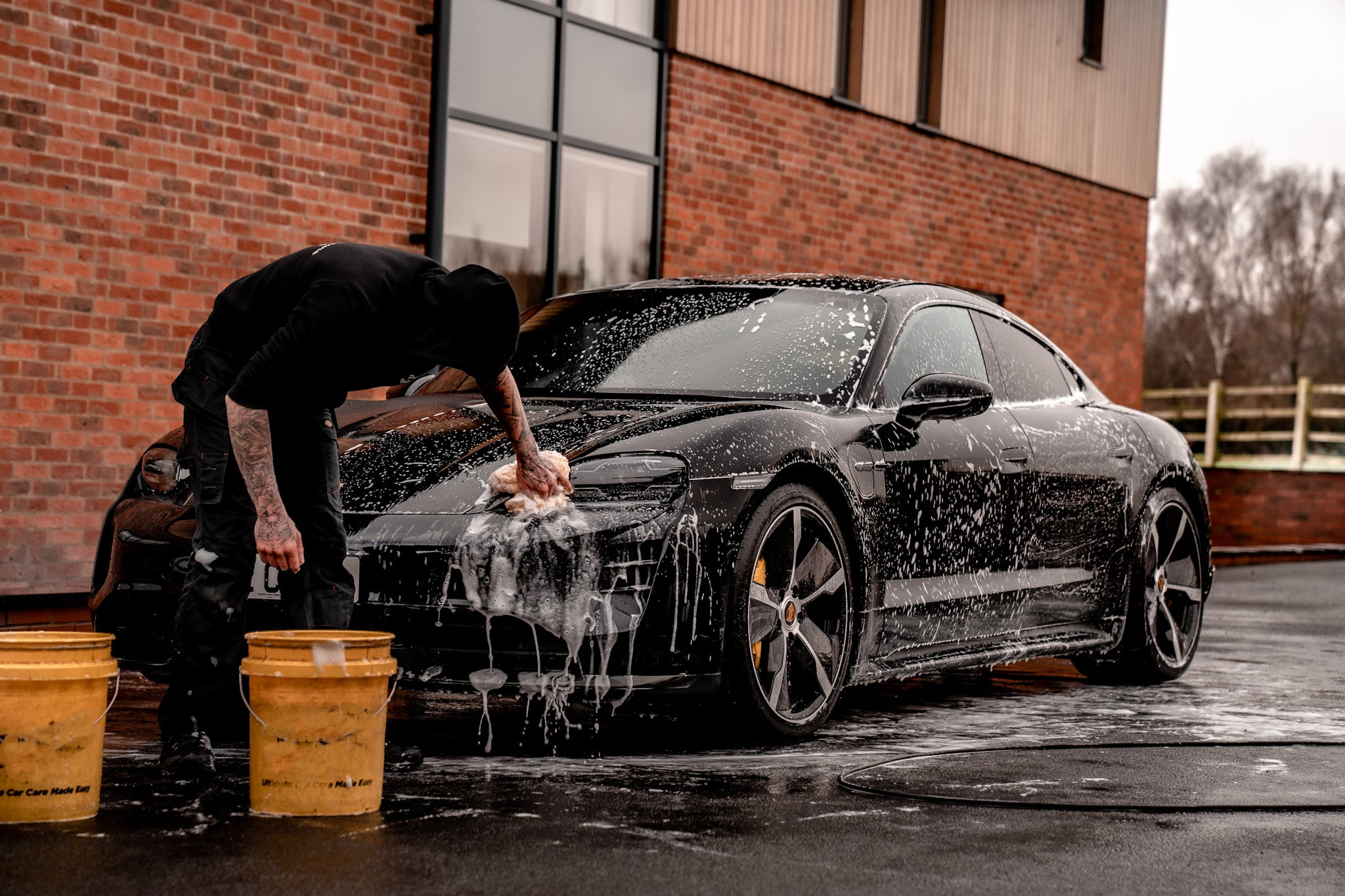Introducing the Scientific Research Behind Ceramic Coatings: How Does It Job and Why Is It Above Traditional Choices?
Ceramic coatings have been getting appeal in numerous sectors for their extraordinary efficiency and longevity. The scientific research behind these coverings surpasses mere surface protection, delving into the complex chemistry that makes them stand out from typical alternatives (ceramic coatings san jose). Comprehending how ceramic finishes job and why they outmatch conventional alternatives is essential for those looking for to enhance the long life and strength of their materials. What specifically establishes ceramic finishes apart, and exactly how do they accomplish such amazing results?
The Chemistry of Ceramic Coatings
In recognizing ceramic coverings, delving right into the complex chemistry behind their composition is crucial for realizing their capability and durability. Ceramic layers are mostly composed of silicon dioxide (SiO2), which develops a solid and protective layer when put on various surfaces. This chemical framework supplies outstanding resistance to heat, chemicals, and corrosion, making ceramic coverings extremely searched for for a large range of applications.
The chemistry behind ceramic layers involves the development of covalent bonds in between silicon and oxygen atoms, developing a stiff network that enhances the finish's sturdiness and longevity. Furthermore, the presence of other elements such as titanium, zirconium, and aluminum further boosts the layer's properties, providing raised firmness and attachment to surface areas.
Understanding the chemical composition of ceramic finishings enables the personalization of formulas to suit particular demands, whether it be for auto, industrial, or domestic functions. By using the power of chemistry, ceramic coatings continue to lead the way for remarkable security and efficiency in different markets.
Advantages of Ceramic Coatings

As a result, ceramic layers make cleaning and preserving surface areas much easier and much less taxing. On the whole, the wide range of benefits used by ceramic layers make them a remarkable alternative contrasted to conventional finishing approaches.
Just How Ceramic Coatings Bond
Ceramic coverings bond to surfaces via a process that entails molecular adhesion and chemical communications. When a ceramic covering is put on a surface, it forms a strong bond by chemically sticking to the surface at a molecular level. This bond is created with the development of covalent bonds, which are incredibly strong and long lasting. The ceramic finish's molecules permeate the pores of the surface area, producing a limited hold that withstands separation.
Additionally, the chemical communications in between the ceramic finishing and the surface area even more boost the bond. ceramic coatings san jose. These interactions permit the ceramic layer to produce a seamless and continual layer on the surface area, supplying exceptional security and toughness. Unlike conventional layers that may rest on the surface area without fully bonding, ceramic finishes produce an irreversible bond that is resistant to chemicals, UV rays, and harsh environmental problems

Basically, the bonding mechanism of ceramic coatings makes certain a resilient and efficient protective layer that outmatches typical finishing options. This remarkable bond adds to the durability, scratch resistance, and durability of ceramic finishes, making them a favored option for different applications.
Toughness of Ceramic Coatings
The outstanding durability of ceramic finishes originates from their durable molecular adhesion and content chemical communications with surface areas, making certain a long lasting protective layer that exceeds standard covering choices. When applied, ceramic coverings create a strong bond with the substrate, creating a resistant obstacle against different environmental stress factors such as UV radiation, chemicals, and abrasions. This bond is so secure that it can withstand the roughness of daily use without deteriorating or weakening promptly.
Unlike typical coatings that might degrade in time, ceramic finishes preserve their stability for a prolonged period, providing long-lasting protection for the underlying surface area. The solid molecular structure of ceramic coatings stands up to damaging, fading, and peeling, making sure that the surface stays secured and visually pleasing for years ahead. This durability not only reduces the requirement for frequent reapplications but likewise saves time and cash over time. In general, the remarkable longevity of ceramic layers makes them an exceptional option for securing a variety of surface areas in various applications.
Ceramic Coatings Vs. Traditional Options
In comparison to traditional covering techniques, ceramic finishings provide a distinct mix of resilience and safety capabilities that set them apart in various surface defense applications. Conventional alternatives such as wax or sealers provide a momentary layer of protection that can diminish rapidly, requiring regular reapplication. On the various important source other hand, ceramic finishings develop a strong bond with the surface area, developing a permanent or semi-permanent obstacle that is highly immune to abrasion, chemicals, UV rays, and severe temperature levels.
Moreover, ceramic coverings offer exceptional hydrophobic properties contrasted to traditional finishings. The hydrophobic nature of ceramic finishes triggers water to bead up and roll off the surface, carrying dust and pollutants with it. This self-cleaning impact assists to maintain the surface's sanitation and gloss for extensive periods, decreasing the requirement for constant upkeep.
In addition, ceramic finishes have a thicker layer contrasted to conventional alternatives, providing improved scratch resistance and defense against small impacts. This toughness ensures long-lasting performance and helps maintain the visual charm of the treated surface for a prolonged period.
Verdict
In final thought, the science behind ceramic finishings exists in their chemical make-up and bonding buildings, making them superior to typical choices. The advantages of ceramic finishings consist of boosted resilience and protection for surface areas. By recognizing how ceramic finishings job and their advantages over typical choices, one can make educated decisions when thinking about finishing options for various applications.
Unlike typical finishes that may rest on the surface without completely bonding, ceramic layers produce a long-term bond that is immune to chemicals, UV rays, and rough ecological problems.
The remarkable durability of ceramic finishes stems from their robust molecular adhesion and chemical interactions with surfaces, making sure a resilient protective layer that exceeds typical finishing choices.Unlike typical coatings that might deteriorate over time, ceramic finishings maintain their integrity for an extended period, providing long-lasting protection for the underlying surface.In comparison to traditional finish approaches, ceramic coatings use an unique mix of durability and safety abilities that best site set them apart in numerous surface protection applications. By understanding just how ceramic layers work and their benefits over conventional choices, one can make enlightened decisions when taking into consideration layer choices for numerous applications.